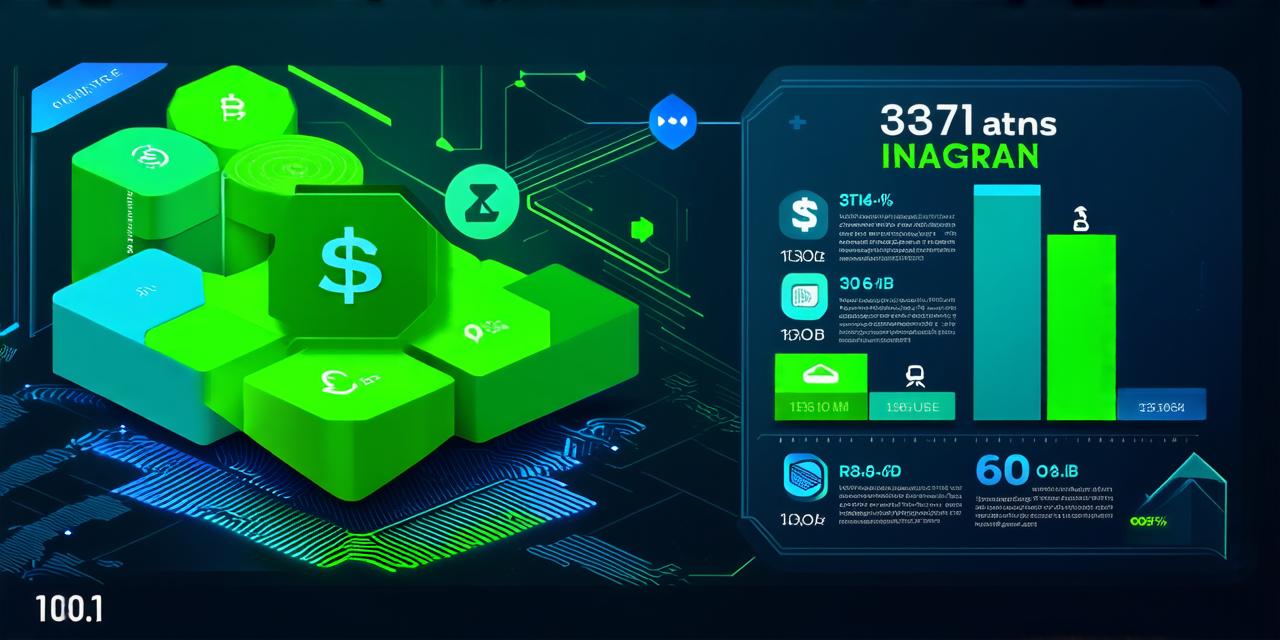Introduction
Staking is a process where cryptocurrency holders lock up their tokens to participate in the network’s consensus mechanism. By doing so, they can earn rewards in the form of transaction fees and newly minted coins. Staking has become an increasingly popular method for investors looking for a low-risk way to generate passive income.
How Staking Works
Staking involves locking up cryptocurrency tokens to participate in a network’s consensus mechanism. The process typically involves two main components: validators and delegates.
Validators are responsible for verifying the integrity of transactions on the blockchain. They use computational power and resources to validate transactions, adding them to the blockchain and ensuring the network remains secure and efficient. Validators are rewarded with transaction fees for their services.
Delegates, on the other hand, represent a group of validators and are responsible for making decisions on behalf of the entire network. Delegates are chosen through a process called delegation, where token holders vote for the most trustworthy and reliable candidates. Delegates are also rewarded with transaction fees and newly minted coins for their services.
Benefits of Staking
There are several benefits to staking cryptocurrency tokens:
- Passive Income: Staking allows investors to generate passive income by earning transaction fees and newly minted coins.
- Network Security: By locking up tokens, investors help secure the network and ensure that transactions are processed efficiently and securely. This helps to prevent attacks and other security breaches that could harm the network and its users.
- Community Engagement: Staking allows token holders to engage with the network and contribute to its development. By participating in the consensus mechanism, investors can help shape the future of the project and ensure that it remains successful and relevant.
- Diversification: Staking provides an alternative way to diversify a portfolio and reduce risk. Investors can hold multiple tokens and participate in different networks to spread out their investments and mitigate potential losses.
Risks of Staking
While staking offers several benefits, it also comes with some risks that investors should be aware of:
- Liquidity Risk: Staking tokens may not be easily accessible for immediate use in case of an emergency or other unexpected events. Investors should always have a backup plan and sufficient liquidity to cover their needs.
- Security Risk: Staking involves locking up valuable assets, which makes it vulnerable to hacking and theft. Investors should take appropriate security measures to protect their tokens, such as using secure wallets and keeping their private keys safe.
- Market Risk: The value of cryptocurrencies can be volatile and subject to sudden price swings. Staking may not be a suitable option for investors who are unable to withstand market fluctuations or who have short-term investment goals.
- Regulatory Risk: Cryptocurrency regulations are still evolving, and there is a risk that governments and other regulatory bodies could crack down on staking or other forms of cryptocurrency investment. Investors should stay informed about regulatory developments and be prepared to adapt their strategies as needed.
Staking Strategies
There are several staking strategies that investors can use to maximize their returns:
- Single-Token Staking: This is the most common staking strategy and involves locking up tokens of a single cryptocurrency to participate in its consensus mechanism. Investors can earn transaction fees and newly minted coins for their contributions.
- Multi-Token Staking: This strategy involves holding tokens of multiple cryptocurrencies and participating in their consensus mechanisms simultaneously. Investors can benefit from the diversification that comes with holding multiple tokens, as well as potentially higher returns from staking multiple networks.
- Delegated Proof-of-Stake (DPoS): This is a consensus mechanism that allows validators to delegate their staking power to other validators or delegates. DPoS can provide faster transaction processing times and lower fees compared to other consensus mechanisms, making it a popular choice for some investors.
- Proof-of-Authority (PoA): This is another consensus mechanism that allows validators to delegate their staking power to other validators or authorities. PoA is typically used in private networks or enterprise applications where security and speed are paramount.

Best Practices for Staking
Here are some best practices for crypto developers when it comes to staking:
- Diversify Your Portfolio: Investing in a single token or network can be risky, especially if the project is relatively new or has limited community support. Consider diversifying your portfolio by holding tokens of multiple cryptocurrencies and participating in different networks.
- Use Secure Wallets: Storing staked tokens in a secure wallet is crucial to protect against hacking and theft. Choose a reliable wallet that supports the cryptocurrency you are staking and provides strong security features.
